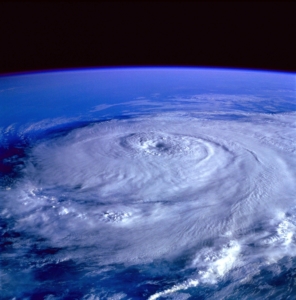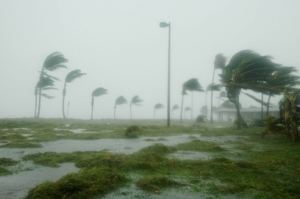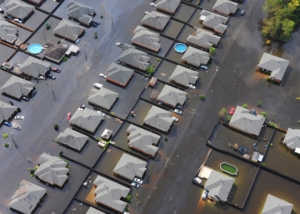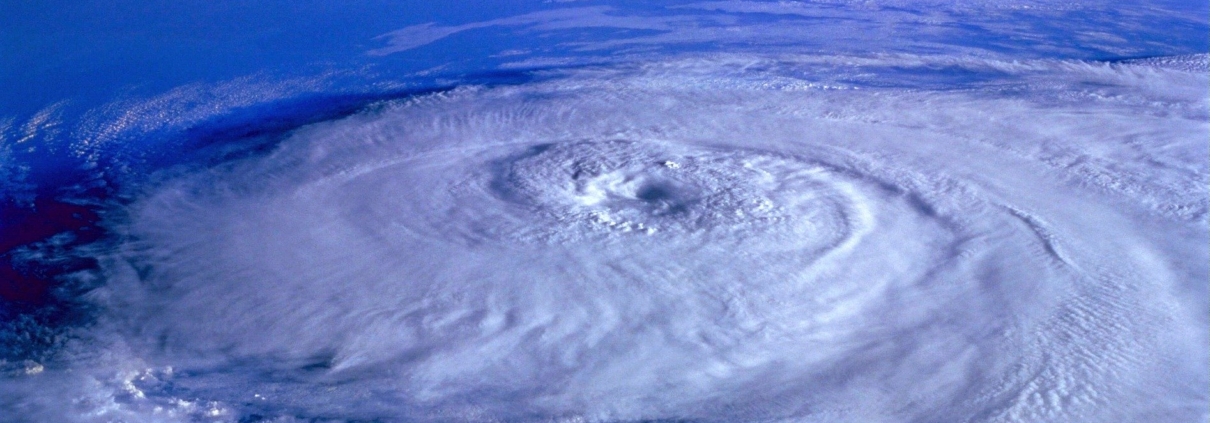Hurricane Season Readiness
There have been 26 separate billion-dollar severe storms in the United States since 2017. With hurricane season upon us, it is incumbent everyone is prepared to respond to a hurricane weather emergency.

In our last blog post, we discussed tornado readiness. In this entry, we turn our attention to hurricanes. This information is designed to help you prepare for a hurricane’s impact on your organization, employees and community by highlighting the tasks you should complete before, during and after a storm. When the National Oceanic and Atmospheric Administration’s (NOAA) National Hurricane Center issues a watch or warning, use the time available to begin taking appropriate steps.
KNOW THE TERMS
From Penn State University’s Department of Meteorology and Atmospheric Science:
Tropical Depression: An organized system of clouds and thunderstorms with a defined surface circulation and maximum sustained winds of 38 mph or less. Sustained winds are defined as 1-minute average wind measures at about 33 ft. above the surface.
Tropical Storm: An organized system of strong thunderstorms with a defined surface circulation and maximum sustained winds of 39 to 73 mph.
Hurricane: An intense tropical weather system of strong thunderstorms with a well-defined surface circulation and maximum sustained winds of 74 mph or higher.
 Hurricane or Tropical Storm Watch: Hurricane or tropical storm conditions are possible in the specified area of the watch, usually within 48 hours. Individuals inside the Watch area should monitor updates from NOAA and local radio/television.
Hurricane or Tropical Storm Watch: Hurricane or tropical storm conditions are possible in the specified area of the watch, usually within 48 hours. Individuals inside the Watch area should monitor updates from NOAA and local radio/television.
Hurricane or Tropical Storm Warning: Hurricane or tropical storm conditions are expected in the specified area of the warning, usually within 36 hours of the onset of tropical storm force winds. Complete storm preparations and immediately leave the threatened area if directed by local officials.
Extreme Wind Warning: Extreme sustained winds of a major hurricane (115 mph or greater), usually associated with the eyewall, are expected to begin within an hour. Take immediate shelter in the interior portion of a well-built structure.
Short Term Watches and Warnings: These warnings provide detailed information about specific hurricane threats such as flash floods and tornadoes.
Storm Surge: A dome of water pushed onshore by hurricane and tropical storm winds. Storm surges can reach 25 ft. high and be 50+ miles wide. Storm surge is the greatest threat to life and property along coastal areas.
Storm Tide: A combination of a storm surge and the normal tide.
BEFORE THE HURRICANE

- Contact your security vendors and other appropriate suppliers or contractors and place them on alert status.
- Stay up-to-date on progress of the storm via radio, TV or NOAA. Ensure mobile device setting allow wireless emergency alerts.
- Identify safe evacuation routes as well as alternative routes.
- Review your shelter-in-place plan, making sure your disaster kit is fully stocked and fresh batteries and supplies are included.
- Ensure your emergency communication plan is up-to-date and begin advance notifications. Verify contact information for all employees, suppliers and clients as appropriate.
- Test your backup communications plan in the event of evacuation or office closure(s).
- Back up all data. If your backup site is within the area that may be affected by the storm, consider backing up to a secondary location or the cloud.
- Protect and secure vital records and critical business documents. Ensure they are accessible from anywhere.
- Ensure remote access and verify a team is in place to manage updates to the company website and internal intranet during and after the storm.
- Turn off and unplug all non-critical devices such as server monitors or workstations and other non-essential electrical equipment. Make sure any equipment is raised above potential flood levels or removed from threatened sites.
- Check the integrity of your uninterruptible power supply (UPS). Move the UPS to the highest level possible above the floor.
- Alert any third-party partners and suppliers about your relocation plan in the event the storm renders your location inaccessible.
- Ensure appropriate personnel have their re-entry credentials from local law enforcement or other local government officials.
- Obtain cash to allow for purchases in the event of extended power loss.
- Validate any gaps in insurance coverage have been remediated.
- Close appropriate offices in advance to allow personnel an opportunity to evacuate, if needed.
- Inspect and make necessary repairs to drains, gutters and flashing.
- Strap or anchor to the roof deck support assembly all roof-mounted equipment such as HVAC units and exhaust vents.
- Install shutters or plywood over windows and glass doors.
- Remove loose debris.
- Anchor or relocate all non-essential exterior equipment to an indoor location, if possible.
- Secure storage of flammable liquid drums or move them to a sheltered area. Never move flammable agents into main facility areas.
IMMEDIATELY FOLLOWING THE HURRICANE

- Keep listening to radio, TV and NOAA updates to ensure the storm and all threats have passed.
- Wait until the area is declared safe before entering to secure the site and survey damage. Call in key personnel and deploy your security vendors to triage systems and initiate repairs based on priority and ability to reach locations. Ensure safety protocols are in place before repairs begin; control smoking and monitor for open flame sources. Require contractors to share responsibility for fire-safe conditions before and during repairs.
- Remain observant for safety hazards: live wires, leaking gas, flammable liquids, poisonous gas and damage to foundations.
- Clear roofs and gutters, removing all debris to prevent drainage problems.
- Cover broken windows and torn roof coverings immediately.
- Obtain 24-hour security and generators, if needed.
- Separate and secure damaged goods for insurance purposes.
- Continue to communicate with employees and customers through all stages of recovery.
Our security consultants have decades of experience advising regional and global clients across numerous industries including automotive, construction, energy, financial services, real estate and more. GMR 410’s services help create a safe environment with thorough threat assessments, policy and procedure review and development, and security audits. Unfortunately – and often without warning – a crisis occurs. Such events may include natural or manmade disasters or criminal activities. Tap into GMR 410’s experience to ensure that you and your teams are prepared to respond to any crisis management or emergency situation.
Mary Gates is a vice-president of GMR 410, LLC, a risk-solution security consulting firm and wholly owned subsidiary of GMR Protection Resources Inc. Learn more at www.gmr410.com.




